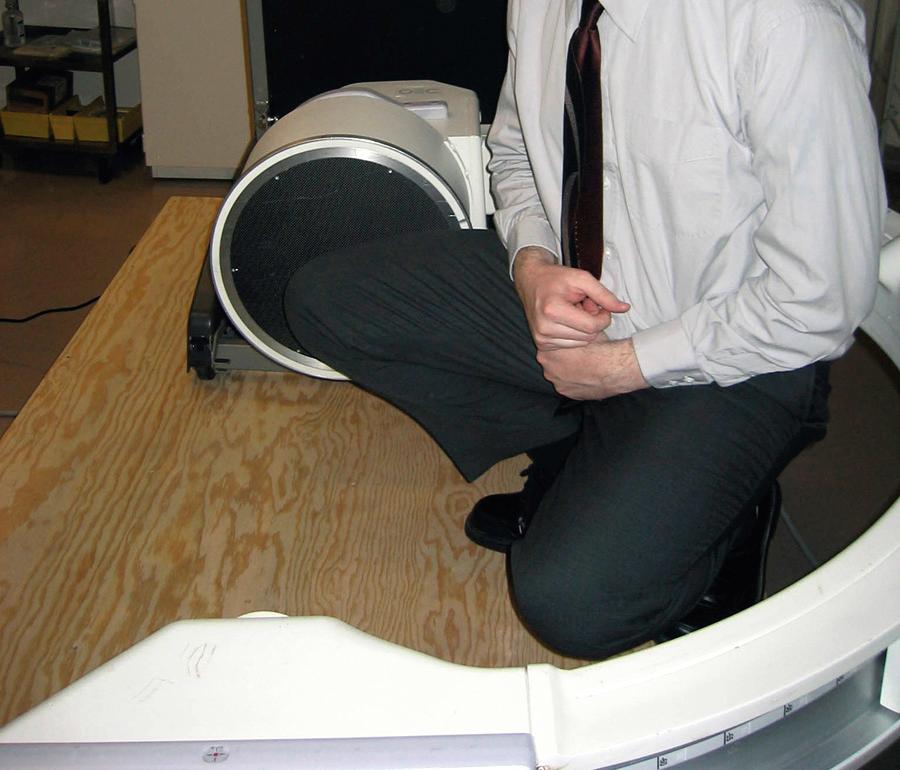Physical Address
304 North Cardinal St.
Dorchester Center, MA 02124
The ongoing goal of improving the outcomes of total knee arthroplasty (TKA) yields the continuing need for accurate in vivo kinematic analyses. Popular kinematic study techniques include in vivo fluoroscopic analyses, in vitro analyses using cadavers, noninvasive analyses using motion tracking surface markers, more invasive in vivo analyses using roentgen stereophotogrammetric analysis (RSA), and quasidynamic magnetic resonance imaging (MRI) testing.
Unfortunately, the mechanical actuators used to simulate muscles in cadaveric studies do not replicate in vivo motion, and hence this technique does not allow for in vivo accuracy. Video analysis using markers attached to the skin, similar to what is found in gait laboratory systems, is a popular form of kinematic analysis because it is noninvasive, effective in determining in-plane rotations, and can determine kinematics of the whole body. However, soft tissue artifact (the movement of skin markers relative to the bone) induces significant out-of-plane rotational and translational errors, and these out-of-plane transformations are measurements that must be precise when evaluating knee kinematics for orthopedics. Although the RSA techniques are generally highly accurate and precise, they are also highly invasive and therefore uncommon for in vivo human analyses. These tests are also conducted under quasistatic conditions, which does not allow for dynamic analysis of the knee joint. Finally, MRI testing is conducted under static, non–weight-bearing conditions, which also does not represent what is happening during daily dynamic activity.
Hence using fluoroscopy as a means of analyzing both normal and implanted joints is becoming an increasingly popular method to evaluate in vivo kinematics. *
* See references .
Fluoroscopy can be used to analyze a variety of activities, both weight bearing and non–weight bearing, including deep knee bend, gait, chair rise, step up, step down, ramps, and leg swings. Fluoroscopy, an imaging technique that uses traditional x-rays to create a video, allows for two-dimensional (2D) visualization of the joint throughout the entire activity. During a fluoroscopic study, the subject is asked to perform an activity while the subject's joint is under fluoroscopic surveillance ( Fig. 17.1 ). Throughout data collection, it is advantageous to keep the knee in the center of the video, and this is generally easier if the knee is kept as close to the image intensifier as possible. Although the optimal plane to use for analysis is activity-specific, depending on the nature of the data that is desired, fluoroscopic studies of the knee are generally conducted in the sagittal plane.

After patients have performed the required activities while under fluoroscopic surveillance, the videos, recorded at frame rates of 30 or 60 Hz, are stored digitally, and specific frames of interest are captured from the video and exported into the preprocessing software. Depending on the type of fluoroscopy unit used, the images may experience distortion. The extent of image distortion depends on the medium that is used to detect the x-rays. For example, analog image intensifiers generally experience much less distortion than digital flat panel detectors.
Distortion effects, such as pin cushion and spiral distortion, must be corrected to ensure that the image registration techniques are accurate. This can be performed using fiducial control markers. These control markers, generally a grid of metallic beads in precise, systematic, and known spacing, are used to transform each pixel of the fluoroscopic image until the modified image correctly matches the true, undistorted grid. After the images have been properly processed, they can be exported to a model-fitting software program for three-dimensional (3D)-to-2D registration.
Become a Clinical Tree membership for Full access and enjoy Unlimited articles
If you are a member. Log in here